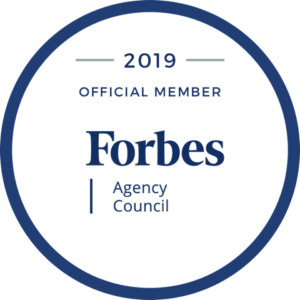SmartMouth Talks!
Happy Holidays!
Here we are at the end of 2021. Cheers to all of us! We’ve been in person, virtual, working, resigning, working from home, returning to offices, and a hybrid of all of the above. We’ve seen normal, new normal, and the next normal. Adapting to change seems to be the one constant.
But it’s not.
The one constant is Communication. Communication is the one superpower that can handle anything! In fact, I may be biased, but I would suggest that the people and the organizations who value communication the most and execute on it the best are poised to be more successful and better prepared for whatever comes our way in the new year.
As we reflect on this past year and look to 2022, let’s put Communication at #1. It’s the one thing we all need.
Happy Holidays!

Q4 Challenge
 It doesn’t take much to be a good leader-communicator. Perfection may be elusive, but being good enough to earn the admiration of your team are well within reach. Adherence to a few core principles takes care of most situations.
It doesn’t take much to be a good leader-communicator. Perfection may be elusive, but being good enough to earn the admiration of your team are well within reach. Adherence to a few core principles takes care of most situations.
In my book Jock Talk: 5 Communication Principles for Leaders as Exemplified by Legends of the Sports World, I walk readers through the philosophy behind, and application of, these 5 principles: Audience-centricity, Transparency, Graciousness, Brevity, and Preparedness.
Taken together, they send two really important messages about you to your audience: 1) that you care about and respect them, and 2) that you’re real and therefore credible and trustworthy.
What To Do in Your First 120 Seconds
Three Tips to Overcome Public Speaking Nerves
 Do you get nervous about speaking in public? Sometimes? Always? Let’s see what we’re even talking about here.
Do you get nervous about speaking in public? Sometimes? Always? Let’s see what we’re even talking about here.
One way Webster’s Dictionary describes nerves is “marked by strength of thought, feeling, or style: spirited.” That doesn’t sound like such a bad thing, does it? I think it sounds kind of promising. And that’s exactly the point.
Nervous energy is not negative energy. It’s positive. It’s your body’s adrenaline getting you ready to do a killer job. You just have to embrace it and understand it is a natural part of the experience.
The good news about the adrenaline rush you feel at the beginning of your talk
– even if it’s making you short on breath or sick to your stomach – is that it’s going to level off. There is research as well as anecdotal evidence that nervousness fades in the first two minutes.
So, here are 3 tips for you for those first 120 seconds:
1. Accept, rather than resist, that your nerves will come with you to the front of the room – kind of like a constant companion. And know that they’ll begin to dissolve in a matter of seconds.
2. Choreograph your opening in a way that allows you to share the floor with your audience and gives you a chance to inhale and exhale – and maybe even relax a wee bit. One example of this is opening with a question for the audience and soliciting some input from them. Engaging the audience takes pressure off you and gives you a feeling of control that helps your nerves dissipate more quickly.
3. Even if you don’t have a lot of time for rehearsing, set aside a little time to practice your opening. If you are familiar and comfortable with your opening, and you practice delivering it in a deliberately slow manner, you just might be able to compensate for the adrenaline that makes you flustered and that makes you speed talk.
Nerves happen. They’re natural. They’re energy. And they’re temporary.
Presentation Theatrics
 “Go right up to that line but don’t cross it,” I say. My client, rehearsing her speech for me, says, “Okay, let me give it another try.”
“Go right up to that line but don’t cross it,” I say. My client, rehearsing her speech for me, says, “Okay, let me give it another try.”
The line I’m referring to is the invisible but instinctive line between what’s barely comfortable and what’s not when employing theatrics to enhance your delivery.
Don’t let the word theatrics throw you off or cause you to self-select out of reading any further. Presentation theatrics are necessary, they animate you and your content. Theatrics are the energy – voice and body – that you infuse into your delivery. They should produce a delivery that feels a bit exaggerated to you but simply comes off as energetic to your audience.
To achieve that energetic connection with your audiences, here are some tips for your voice, hands and body:
Voice. In a word, modulate. Vary and adjust your speaking pace, volume, pitch. For example, if there is a section of your speech that should sound more conversational, then you can speak at a quicker pace and with a normal tone of voice. If you have a word, phrase or sentence that warrants attention, you will want to slow down, project your voice, and essentially emphasize it orally as you would if you were writing it in boldface font.
Hands. Use them as props in your play. Think Charades. You can literally animate your speech by using gestures that go with your words. For example, to welcome your audience or when talking about “all of us here in this room,” use outstretched arms to make a large, open embrace. If you are talking about something personal or touching or emotional, put your hands to your heart. You can clap (yes!), punch your fist in the air (victory!), offer an exaggerated shrug (who knew?!), put the back of your hand to your forehead (ugh!). Talking with your hands is a-okay.
Body. Unless you are forced to stand behind a podium due to a fixed microphone, you want to use your body also. Nothing distracting (like pacing), but some movement across the floor or stage helps to keep your audience’s attention. For example, if you’re talking about making a change or a move, literally walk a few feet across the floor. Move to get closer to different sides or sections of the room. Take a giant step forward to illustrate progress or a step backward to illustrate a setback. Act out your words.
Regardless of how you animate your speech and which tactics you use, just know that you will be pushing yourself and using your whole body, head to toe. Keep it authentically you, but an exaggerated you. Push it to the point where you feel like you’re putting on a show … because you are.
When Will You Know You’re Good?
 When will you know you’re good? Maybe never. And that’s a good thing.
When will you know you’re good? Maybe never. And that’s a good thing.
You can be a highly confident, highly competent speaker and still not be as good as you want to be or think you should be. And that’s really a good thing.
Why? Because it keeps you on your toes. That’s the simple answer. You want to be on your toes for every audience. Once you think you’ve arrived, or that you’re good enough, you’ll get complacent and, trust me, it’ll show. Audiences will pick up on it. Just by the very nature of audiences – that each one is different – you are earning your stripes each time you get up to speak.
Being a good public speaker is a journey in which the endpoint is always moving and changing. You want it that way. You want to work at it, strive for it, and sweat it out.
If you’re like I am and you try to stay on your toes, then how else do you continue the journey to greatness as a speaker? The best coaching you can get, and the best way to get closer to that greatness, is to listen to audience feedback. Ask for it anecdotally or through evaluation forms, and then do something with it. Feedback is the GPS for your journey, be sure to pay attention to it!
So, when will you know you’re good? When you get to a point where you actually crave feedback, where you look for ways to adapt and improve all the time. Then I’d say you’re pretty darn good!
Are You Using Sound Bridges?
 Picture a swinging rope bridge, the kind you might cross while hiking on an exotic vacation. That’s what your um’s and ah’s are. They are simply a suspension bridge connecting your sentences. They are sound bridges.
Picture a swinging rope bridge, the kind you might cross while hiking on an exotic vacation. That’s what your um’s and ah’s are. They are simply a suspension bridge connecting your sentences. They are sound bridges.
Do you find yourself crossing those bridges, either unwillingly or unwittingly? Do you think if you were more conscious of what you were doing and why – likely trying to avoid silence at all costs – you might be able to quell the urge to use a sound bridge?
Clients ask me all the time to help them with um’s and ah’s. I would say that, realistically speaking, 80% of the time it’s not an issue. It’s either so minor, it’s barely noticeable, or it’s not noticeable at all. Only when those pesky sound bridges are distracting to the audience do we even really venture to work on it.
Working on it means two things: 1) the speaker becoming keenly aware of what’s coming out of their mouth; and 2) the speaker disciplining her/himself to be okay with a pause in between sentences.
Pauses are not a big deal. To the audience, a one- or two-second pause goes right over their heads, it doesn’t even register. Yet, I know that to the speaker, it can feel like one or two days.
Here’s the rub, speakers: getting comfortable with a hard stop on the sentence you’re finishing, followed by a hard start on the next sentence is all you need to be aware of and disciplined about. So for the 20% or so of you who find yourselves crossing sound bridges more often than you like, give it a try and see if you can get yourselves comfortable with a quick pause with no sound.
Trust me, it’ll be okay. It’s less scary than crossing one of those swinging rope bridges!
#presentationhack
 Have you ever wished your upcoming presentation would just create itself? I think we all have; hence, the almost inevitable procrastination and dread. Developing a presentation can be challenging, time-consuming, and just plain overwhelming. You’re not sure where to begin, how to narrow your focus, or if you’re doing it “right.”
Have you ever wished your upcoming presentation would just create itself? I think we all have; hence, the almost inevitable procrastination and dread. Developing a presentation can be challenging, time-consuming, and just plain overwhelming. You’re not sure where to begin, how to narrow your focus, or if you’re doing it “right.”
Well, your wish has pretty much been granted. SmartMouth’s SpeechBuilder is a free online tool you can use anytime. SpeechBuilder is a fill-in-the-blanks solution for outlining or detailing your presentations. It prompts you to create a presentation that flows well for you and your audience. In the few minutes it takes to complete, you’ll get the peace of mind and confidence that comes with knowing you’re well-prepared.
It’s up to you how thorough or sketchy you want to be when you fill in the blanks. Once you’ve completed the SpeechBuilder form, you have several options: you can email it to yourself or others, you can view it in outline form, and you can duplicate it if you need to adapt it for a different audience or occasion. SpeechBuilder will automatically save your entries so you can come back and reference or edit your speeches and presentations anytime.
Protip: Use SpeechBuilder first, and then create your slide deck second. It won’t create the deck for you, but it will generate the order and priority points for you.
For a pocket presentation pal that’s at your fingertips anytime, try the SmartMouth Public Speaking Toolkit, our mobile app in the iTunes and Google Play stores. Same tool, but with more tips, and in your pocket.
Did You Know?
 Here are some fun facts about communication that might surprise (or horrify) you:
Here are some fun facts about communication that might surprise (or horrify) you:
All stereotypes aside, men and women speak approximately the same number of words per day – around 10,000, give or take a few.
Many of us spend 70 to 80% of our waking hours in some form of communication.
Of our daily communication time, we spend about 9% writing, 16% reading, 30% speaking, and 45% listening (Yikes!).
91% of people in the workplace report daydreaming during meetings. 73% do other work, and another 39% sleep. (Obviously very few are listening!)
The average person checks their email 36 times per hour. Yet it takes 16 minutes to refocus after opening email.
We spend approximately 15 million person hours per day viewing presentations in the U.S. alone.
These data points come from a variety of (reliable) sources and all point to one thing – communication is constant. And critical. Per the SmartMouth motto, communication is the currency of success … we cannot and do not succeed alone, we have to communicate in order to get things done and achieve goals. The above list of fun facts simply reminds us to make it count!
Make Your Younger Self Proud!
 I’m going out on a limb here and speculating that when you were a kid, you never said:
I’m going out on a limb here and speculating that when you were a kid, you never said:
“When I grow up, I’m going to copy my boss in everything he/she does.”
“When I grow up, being mediocre will be good enough for me.”
“When I grow up, I’m not going to push myself or change anything.”
If, indeed, you did say any of these things, read no further. This article is not for you.
If, however, I’m right and you never said any of these things, then let’s talk.
As kids, we see our best selves in the future. Dreaming big comes with the territory of being young, idealistic, and optimistic. To wit, all the little kids who believe they’ll be a professional athlete, a movie star, or just plain rich and famous … despite the odds.
So, now you’re a grown-up, a professional, and your career matters to you. You’re ambitious, and you have your eye on something … big, next, consequential. Therefore, making a good impression and presenting yourself confidently and competently are important.
In terms of how you present yourself, in person and online, are you your best self now? Do you show energy and passion? Are your ideas articulated in a crisp, concise, impactful way? Have you adapted your delivery style to the new frontier – and the relatively small square allotted to you – on Zoom/WebEx/Teams/BlueJeans or whatever platform you’re using?
Here are 3 thoughts for you, so that you can make your younger self proud:
- Step it up, and step out. Yes, the world has changed, how we meet with one another has changed, and so it’s time to up your game! Even if you’re someone who “owns the room” during in-person meetings and presentations, you may not be owning your little square on-screen. Try some new things, and make yourself a little uncomfortable so that you stand out. Check out this video for some virtual presenting tips. The last thing you want to do is the bare minimum, or what everyone else is doing, online. Figure out your thing(s) for doing it differently and well!
- Give time back to your audience. We’re among friends, so let’s admit it: Sitting through sessions online, whether they’re casual meetings or more formal presentations, is tedious and puts everyone’s attention spans to the ultimate test. While it has been my hue and cry for a very long time, #brevity has been upgraded from urgent to being a full-blown emergency. Be brief, concise, to the point, even shorter than the occasion calls for so that you make your point, you’re memorable and you’re invited back. There’s nothing quite like giving time back to your audience. Trust me, if they want to hear more from you, they’ll let you know. Leave ‘em hungry!
- Add new tricks to your bag. Based on the types of meetings you lead or participate in, find interactive software tools you can incorporate into your online sessions. Does this force you to learn and try something new, even though you might encounter a glitch or two when you initially deploy it? Yup. (And does it potentially involve a new account login somewhere? Yup.) But the alternative is same-old same-old, mediocrity, and dread on the audience’s part. Your audience will love and learn from the interaction, and you will hold onto their itty bitty slivers of attention by using new tricks!
Making a good impression and engaging audiences is more challenging online, there’s no question about that. The good news is, we’re all pioneering this new frontier together and so the opportunities to try new things and stand out from our peers are wide open. Bottom line: You can keep the blinders on and wait out the pandemic until you return to in-person meetings (that is, if we return to those). Or you can seize the moment, pony up to make some changes, and differentiate yourself.
I would venture to say the seizing the moment would make your younger self really proud.
2020 is behind us, whew!
 And now 2021 looms ahead with a lot of anticipation. Namely, we all are wondering … is the return to normal coming soon?
And now 2021 looms ahead with a lot of anticipation. Namely, we all are wondering … is the return to normal coming soon?
No one can say for sure. Workplaces have different policies and schedules for returning to the office … or not. Schools and professional sports teams have a plan … and a backup plan. Small businesses, hanging by a thread after all these months, are crossing their fingers and waiting … and waiting.
Still, no one can say for sure. And even if someone did say for sure, would you believe them? Ouch. It is for that reason, I assume (I haven’t tried to get confirmation), that President Biden’s first order of business is rebuilding trust.
Rebuilding trust is largely a communication task. It requires three main ingredients:
Transparency. True transparency is being honest and forthright with information, of course, but even more so, with emotion. Sharing the emotional piece – e.g. “we’re frustrated with the pace”; “we were disappointed in the results”; “we are overjoyed to learn that …” – humanizes the speaker and the organization. It strips away the robotic report-speak or corporate-speak that’s hard for audiences to relate to, and replaces those with humanity and feeling that truly reaches people.
Action. Words and actions need to be in lockstep with each another. One without the other is hollow. Actions require words to build awareness, and words require actions to build credibility. Awareness and credibility together build trust.
Patience and Persistence. Trust is earned over time. There’s no finger-snapping to make it happen faster. People need to get accustomed to the transparency and the follow-through on the action in order to even begin to trust. So, in building or rebuilding trust, an organization must be patient and persistent. There are no shortcuts.
Corporations, nonprofits, and governments all are susceptible to lapses in, or loss of, trust, and may be in the position of rebuilding it. If that’s the case, be aware that there’s no way around these three ingredients. The best of all possible circumstances, though, is never losing trust, and that only happens to organizations whose communications are transparent and who consistently follow through with the corresponding action.
Here’s to 2021 and a rebuilding of trust!



